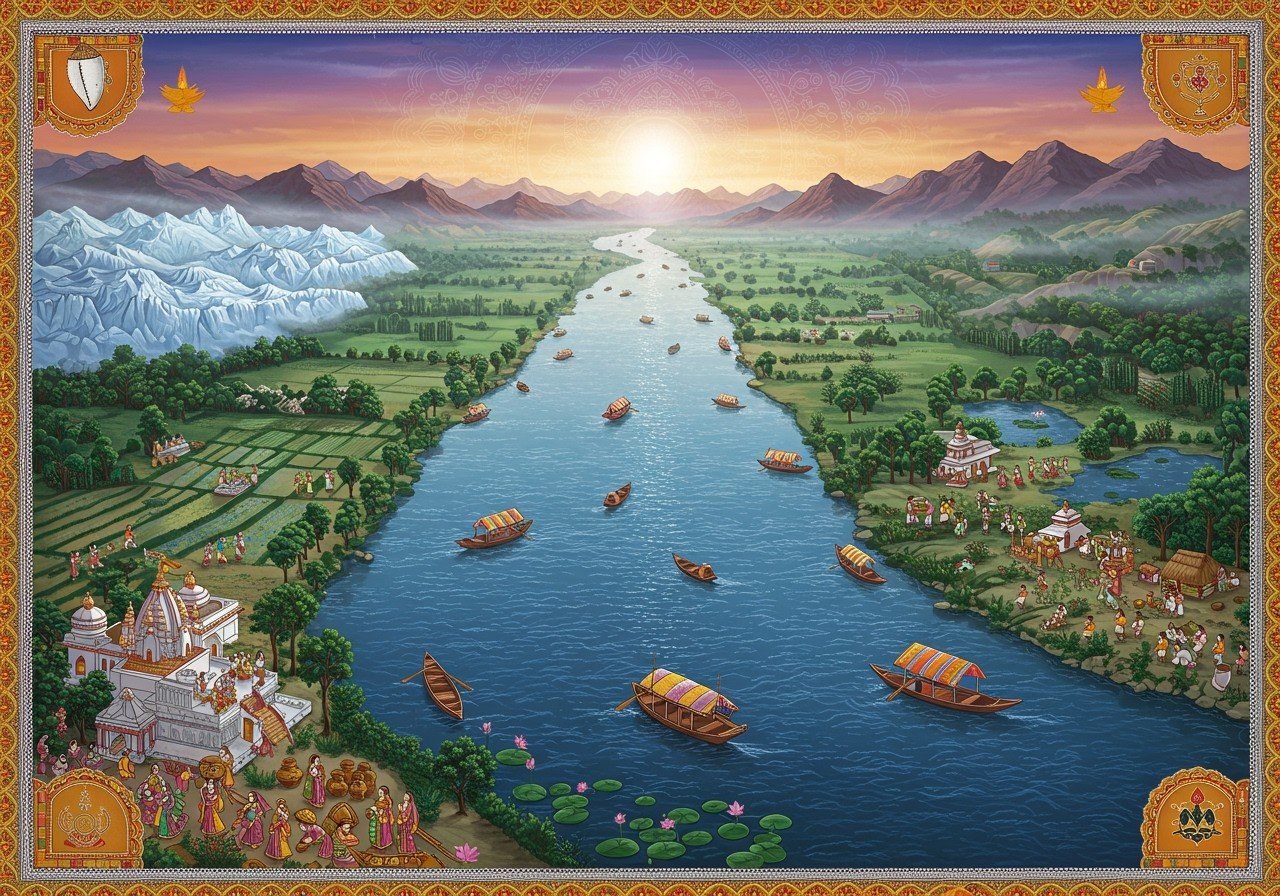
The Indian subcontinent, a land of ancient civilizations and diverse cultures, is crisscrossed by a network of rivers that have shaped its history, nurtured its people, and inspired its spirituality. These rivers are not merely geographical features; they are lifelines, woven into the fabric of life itself. This guide explores the major rivers of the Indian subcontinent, their significance, and the challenges they face in contemporary times.
Geographical Overview
The Indian subcontinent encompasses a vast and varied landscape, from the towering Himalayas to the fertile Indo-Gangetic plains and the Deccan Plateau. These geographical features greatly influence the courses and characteristics of the rivers. The Himalayas, the source of many major rivers, provide a constant flow of water fed by melting snow and glaciers. The Deccan Plateau and the Indo-Gangetic plain shape the rivers’ paths towards the sea.
The subcontinent experiences diverse climatic conditions, including arid deserts, humid tropical regions, and everything in between. The monsoon season, with its heavy rainfall, plays a vital role in replenishing rivers, lakes, ponds, and tanks—the four major surface water resources of India. Around 80% of India’s landmass receives substantial rainfall annually, highlighting the importance of these seasonal rains.
Major Rivers
The Indian subcontinent boasts a wealth of rivers, each with its own unique character and significance. Some of the most prominent include:
- Ganges: Originating from the Gangotri Glacier in the Himalayas, the Ganges flows through northern India before emptying into the Bay of Bengal. Revered as sacred by Hindus, the Ganges is vital for agriculture, supporting millions of livelihoods. It is also a focal point of numerous religious rituals and festivals. Learn more about Hindu mythology and the significance of the Ganges.
- Brahmaputra: Starting its journey in Tibet, the Brahmaputra traverses through India and Bangladesh before merging with the Ganges. Known for its massive floodplain and rich biodiversity, this mighty river sustains a complex ecosystem and supports diverse communities. Explore Hinduism’s sacred relationship with nature and the importance of rivers like the Brahmaputra.
- Indus: Another transboundary river originating in Tibet, the Indus flows through Pakistan before reaching the Arabian Sea. It plays a critical role in irrigating the fertile Punjab region, a major agricultural hub. The Indus Valley Civilization, one of the world’s oldest, flourished along its banks.
- Yamuna: Born from the Yamunotri Glacier, the Yamuna joins the Ganges at Allahabad. It holds significant religious importance and is considered sacred in Hinduism. The Yamuna also provides water for agriculture and industry in the regions it flows through.
- Godavari: Rising in Maharashtra, the Godavari flows eastwards across central India before emptying into the Bay of Bengal. Often called the “Dakshin Ganga” (Ganga of the South), it is a major river system supporting a large population.
Water Resources and Management
Despite having numerous rivers and experiencing significant annual rainfall (approximately 80% of the land receives substantial rain), India faces water management challenges. With 18% of the global population, India has access to only about 4% of the world’s water resources. The annual water availability in India’s river basins is estimated at 1,869 billion cubic meters, but only 1,126 billion cubic meters are usable. Rivers receive 80% of their annual flow during the southwest monsoon season, making efficient storage and distribution crucial. Explore Sapta Jal, the seven holy waters, at Poojn.in.
The Indian Rivers Interlinking Project is a proposed solution to address these challenges by connecting major rivers for better water distribution. Traditional water harvesting techniques also play a role in water conservation, especially in rural areas. Community-based water management initiatives have proven successful in some regions, demonstrating the power of local involvement.
Cultural and Religious Significance
Rivers in the Indian subcontinent hold profound cultural and religious significance, particularly within Hinduism. The Ganges, considered the most sacred river, is revered as a goddess and is central to numerous rituals and festivals. Varanasi, a city located on the banks of the Ganges, is a major pilgrimage destination for Hindus seeking spiritual purification. Discover the sacred sites of Varanasi and their connection to the Ganges.
Festivals like Kumbh Mela and Chhath Puja celebrate the importance of rivers in Indian culture and spirituality. These traditions, passed down through generations, highlight the deep connection between people and their rivers.
Conclusion
The rivers and water resources of the Indian subcontinent are integral to its life, culture, and development. They are sources of sustenance, inspiration, and spiritual connection. Understanding their significance and the challenges they face is crucial for ensuring their sustainable management and preservation for future generations. By blending traditional wisdom with modern solutions, we can protect these invaluable resources and ensure their continued flow for the prosperity and well-being of all.


